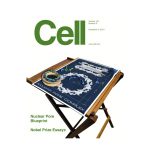Purinergic P2Y₁₄ receptor modulates stress-induced hematopoietic stem/progenitor cell senescence.
Cho J, Yusuf R, Kook S, Attar E, Lee D, Park B, Cheng T, Scadden DT, Lee BC.
Abstract
Purinergic receptors of the P2Y family are G protein-coupled surface receptors that respond to extracellular nucleotides and can mediate responses to local cell damage. P2Y-dependent signaling contributes to thrombotic and/or inflammatory consequences of tissue injury by altering platelet and endothelial activation and immune cell phagocytosis. Here, we have demonstrated that P2Y14 modifies cell senescence and cell death in response to tissue stress, thereby enabling preservation of hematopoietic stem/progenitor cell function. In mice, P2Y14 deficiency had no demonstrable effect under homeostatic conditions; however, radiation stress, aging, sequential exposure to chemotherapy, and serial bone marrow transplantation increased senescence in animals lacking P2Y14. Enhanced senescence coincided with increased ROS, elevated p16(INK4a) expression, and hypophosphorylated Rb and was inhibited by treatment with a ROS scavenger or inhibition of p38/MAPK and JNK. Treatment of WT cells with pertussis toxin recapitulated the P2Y14 phenotype, suggesting that P2Y14 mediates antisenescence effects through Gi/o protein-dependent pathways. Primitive hematopoietic cells lacking P2Y14 were compromised in their ability to restore hematopoiesis in irradiated mice. Together, these data indicate that P2Y14 on stem/progenitor cells of the hematopoietic system inhibits cell senescence by monitoring and responding to the extracellular manifestations of tissue stress and suggest that P2Y14-mediated responses prevent the premature decline of regenerative capacity after injury.




